By Mike Searson
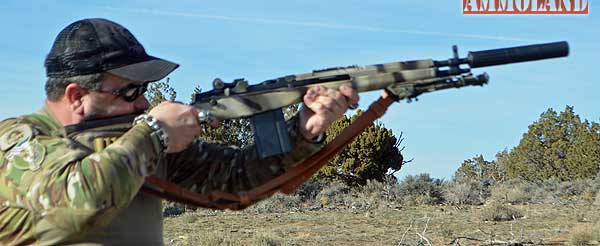
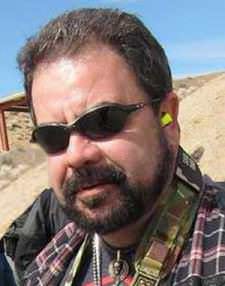
USA – -(Ammoland.com)- The Springfield M1A Rifle is a descendant of the US military’s M14 rifle that was descended from the M1 Garand.
The rifle is a longtime favorite with shooters everywhere due to its accuracy, but has some shortcomings, most notably the ability to add a silencer to the rifle.
This is due to a number of reasons. First being the rifle’s muzzle device.
From the factory, the M1A’s flash suppressor or muzzle brake contains the rifle’s front sight. In order to change that out to use a silencer, whether a direct connect flash suppressor or some type of thread adapter to use a thread-on can, the shooter will lose his front sight.
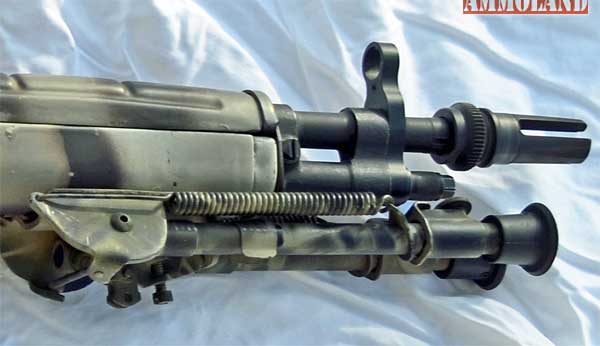
The author moved from a ban state to a free state over a decade ago and one of the first things that had to go on his M1A Scout/Squad was the muzzle brake. It made the rifle too loud and was unsightly. At the time we contacted Smith Enterprise of Mesa, Arizona, for a Vortex Flash Hider and a new gas lock with a hooded front sight.
Ours was marked OIF (Operation Iraqi Freedom) and was the same being fielded by our troops on various DMR rifles.
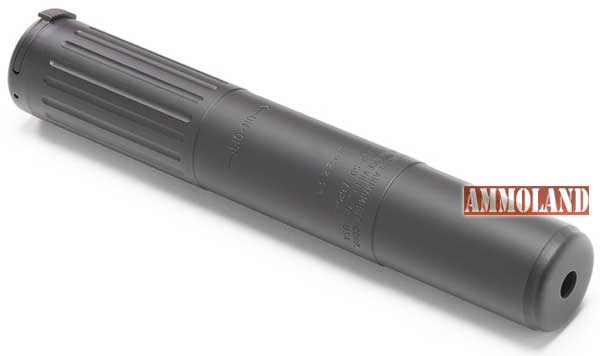
The Vortex allows the installation of a Wind Talker Sound Suppressor, but those are hard to come by, so when we went with a can for the M1A, we opted for Advanced Armament Corporation’s 762-SD and had to change out our Vortex for one of AACs adapters.
The quest does not end there. That just allows the installation of the can, here is where the second issue comes into play: the gas system.
Don’t Get Gassed
After the author picked up his AAC 762-SD from “Silencer Jail” in January, we went out to the local shooting area on BLM land to see if we had just wasted money or if the silencer would actually perform. We tried it on an HK91, AR-10, a few AR-15s, HK93 and finally the M1A Scout Model.
The noise levels were very low, 7.62 NATO is a supersonic round and it would definitely not be as quiet as a pistol can, but we were impressed. Firing the other semi autos was rewarding and the first few rounds from the suppressed M1A had me wondering, “Why does everyone say this is problematic?”
On the fourth round, I found out the hard way. A blast of hot gas caught me in the face. In fact, I felt the burn for a few days afterward.
It was time to find out a solution for this, because the rifle was still very quiet for what it was.
The primary culprit is the open back receiver for this platform. The gas comes straight back toward the shooter’s face. Shooting a suppressor like those made by OSS ( Operators Suppressor Systems ) will cure this problem as their turbine like system traps the hot gasses within the body of the suppressor. The author however prefers a silencer that reduces noise more so than the hot gasses that are a side effect of the firing sequence.
One method is to go to a Schuster adjustable gas plug, which allows the shooter to regulate the amount of gas coming back into the system. Schuster recommends the SOCOM model for a suppressed M1A as it gives more of a workable area between the front of the plug and the rear of the can. It takes some experimentation to get it just right and needs to be adjusted again when shooting unsuppressed. For this reason we held off on the Schuster plug for the time being.
Another method is to use a different stock or chassis for the M1A or even a scope mount if you are running optics. The author prefers to run with open sights on the M1A and a stock that retains the look of the original design. So those solutions were off the table.
Finally, a thought came to mind, based on another product produced by Smith Enterprise: a blank firing adapter.
A blank firing adapter or BFA is used by the military for force on force training with MILES gear. As no round is being discharged, more gas needs to move the piston rearward in order to cycle the action and chamber the next blank. With over 60 years of service behind it, there has to be a viable method for our soldiers, sailors and Marines to train with the rifle without burning their faces.
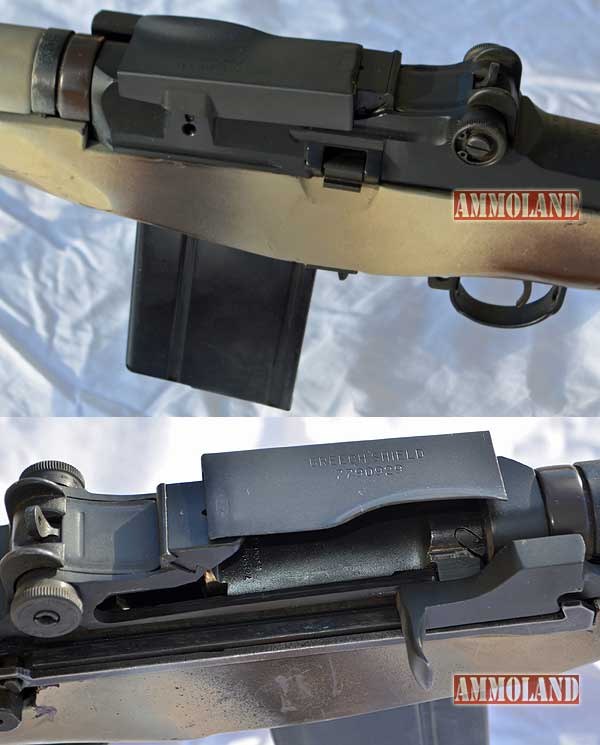
The Breech Shield Adapter
We found a device called a breech shield adapter in US inventory. This is a folded piece of Parkerized metal that fits into the stripper clip guide and is held in place by a detent ball. It keeps gas out of the shooter’s face when running blank cartridges with a BFA, but would it work with a silencer?
Enter Fulton Armory to the rescue. They had them in stock for $10 plus another $10 for shipping. It was easily the lowest cost solution and after fitting it to the rifle, probably one of the more effective solutions.
After running 200 rounds with the breech shield in place and the silencer secured to the muzzle, we experienced no burns of any kind.
However there are two drawbacks to this answer: you lose the ability to feed via stripper clips and it gets the rifle very dirty. Firing 200 rounds looked more like 2000 rounds!
About Mike Searson
Mike Searson’s career as a shooter began as a Marine Rifleman at age 17. He has worked in the firearms industry his entire adult life as a Gunsmith, Ballistician, Consultant, Salesman, Author and was first certified to teach firearms safety in 1989.
Mike has written over 2000 articles for a number of magazines, websites and newsletters including Blade, RECOIL, OFF-GRID, Tactical Officer, SWAT, Tactical World, Gun Digest, Examiner.com and the US Concealed Carry Association as well as AmmoLand Shooting Sports News.
- Home page: www.mikesearson.com
- FB: www.facebook.com/mike.
searson - TWITTER: www.twitter.com/
mikesearson
